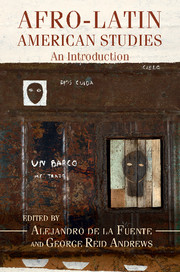Part IV - Transnational Spaces
Published online by Cambridge University Press: 24 April 2018
Summary

- Type
- Chapter
- Information
- Afro-Latin American StudiesAn Introduction, pp. 535 - 614Publisher: Cambridge University PressPrint publication year: 2018



